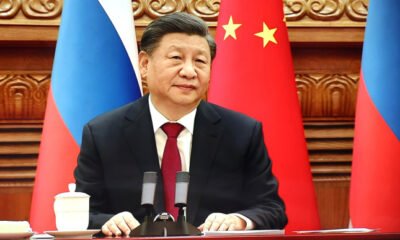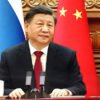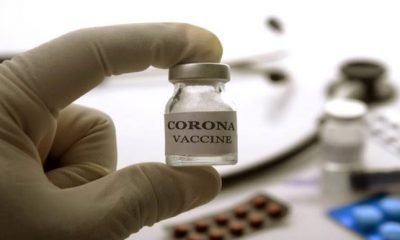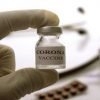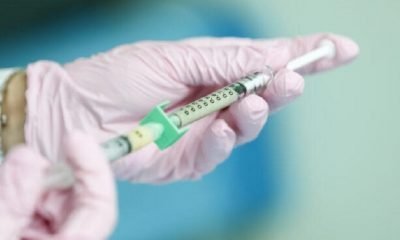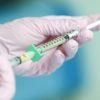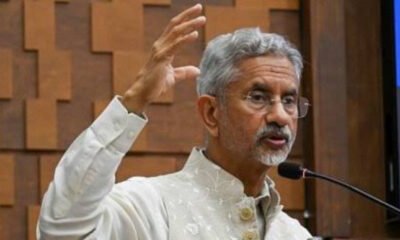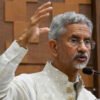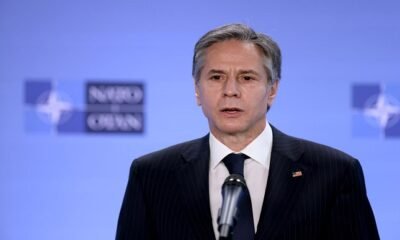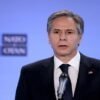International
USA’s response to the China Virus
Santosh K. Dubey.
The outbreak of the COVID-19 pandemic was identified first in Wuhan, China, with the majority view linking the origin of the virus to the wet ‘live’ markets. The response of the White House to these reports was, quoting President Trump- ‘that Americans are at low risk’. Apart from the announcement of travel restrictions and public health guidelines, no measures for containment were announced and implementation of even travel restrictions was largely left to the discretion of individual states.
According to the CDC (Coronavirus Disease 2019 (COVID-19), 2020) ,the United States’ national health protection agency, the first case of COVID-19 identified on American soil was reported on 21thJanuary, 2020. The first infected was a man in his 30s, a resident of Washington, who had recently returned from Wuhan, China to Washington, US on January 15th, 2020. Given the patient’s travel history, the local and state departments were immediately notified, along with the CDC Emergency Operations being contacted as well. In response to this, the US formally announced the establishment of a White House Coronavirus Task Force on January 29th. The responsibility of the White House Coronavirus Task Force was to “coordinate and oversee the Administration’s efforts to monitor, prevent, contain, and mitigate the spread” of the novel coronavirus .While the patient was quarantined in an isolated ward, other cases of COVID-19 in the US begun to be reported as well, with the first case of COVID-19 in a patient being reported with no travel history to an outbreak area, or with any contact with an infected individual. This case, considered as the first instance of local transmission, was reported in California on February 26th, subsequently followed by reports of community transmission from New York, Oregon and Washington. By the end of February, the number of cases reported per day had risen to 24 in the United States. While no social distancing measures were imposed by the federal government and the state governments, a mandatory quarantine of 14 days was imposed for any citizen who had visited the Hubei Province in China by January 30th. The American administration also put a travel ban denying entry to foreign nationals who had travelled to China in the preceding two weeks. To combat the shortage of rapid testing kits, 49 members of the US Congress sent a letter to the CDC Director on February 3rd ,highlighting the urgency of distributing rapid testing kits that could be processed locally, since the CDC manufacturing of it centrally in Atlanta had created a “supply bottleneck”. However, the response to this letter was deferred, with the CDC correcting the testing snag only when the diagnosis of several new cases was delayed, particularly in the state of California. It was only on February 6th that the CDC discovered that the tests being conducted by state run labs were inadequate, and thus had to be resent to the Atlanta CDC lab. Cases of asymptomatic carriers of the novel coronavirus were finally reported with improvement in testing. By mid-February, the US was testing a hundred samples a day, much less compared to the 10,000 tests which were conducted by South Korea in the initial stages of the novel coronaviruses spread in the country. A report by the National Geographic on the Strategic National Stockpile of the US, reported that the stockpile had only 30 million surgical masks and 12 million N-95 respirators in reserve, less than a fraction of the medical supplies the country needed to combat the severe outbreak respiratory. The first death due to COVID-19 was reported on February 29th in Washington, though later it was discovered that the first death due to the virus had actually occurred on February 6th.
Fight against Covid-19: 82 years-old war widow donates 2 lakhs to PM Cares Fund
On the 6th of March, US President Donal Trump approved the Coronavirus Preparedness and Response Supplemental Appropriation Act, which provided 8.3 billion USD as an emergency fund for federal institutions to respond to the outbreak .As confirmed cases of COVID-19 crossed 1,100 by 11th March, many ,but not all, universities and colleges suspended classes and most moved to remote teaching. While in some states like Washington and California, all public gatherings were banned. Major sport leagues closed nationwide, cancelling games, and suspending their seasons. As of March 20th, the U.S had 19,285 confirmed cases of COVID-19 resulting in 249 deaths. While California and Chicago, along with other potential hot spots, issued a stay at home order, there was no implementation of a nationwide lockdown yet. Less affected regions like Mississippi and Oklahoma only closed schools, but no other restriction was implemented. The financial markets continued to suffer, especially the stock market, despite the Federal Reserve’s lowering of interest rates on March 16th. On March 17th , manifests of vessels kept by U.S. Customs and Border Protection revealed a stable flow of the health gear required to remedy the coronavirus being transported abroad. By March 25th, with more than 54,000 cases of COVID-19 being reported, the US Senate decided to pass a bill which: provided $1,200 to most adults (phased out for individuals making from $75,000 to $99,000 a year), $600 a week unemployment benefits (approximately $2,400 a month) on top of state unemployment benefits and to last potentially for four months and also including self-employed and others in the “gig economy” , in addition to $500 billion for industries, firms and municipalities. According to a report by the Our World in Data, there were 3,170 deaths, 1,64,620 cases and 1.07 million tests completed in the US. During the week of March 25th to April 1st, the US was performing up to 110,000 tests per day, even though the necessary number of tests per day was projected to be between 500,000 and 1 million. By the beginning of April, the number of COVID-19 cases climbed over 0.1 million, with states that had not yet imposed a lockdown implementing stay at home orders and only allow essential businesses to operate. During the same period, the White House and the WHO entered into a dispute over WHO’s handling of the pandemic, with US funding to the WHO eventually being halted. As of April 2nd, New York emerged as the epicentre of the pandemic in the entire world, having more than 1,89,000 cases in the city alone. A survey by US federal health inspectors found that hospitals and medical centres were faced with “severe shortages” of medical kits, personal protective equipment(PPE) and other strained resources. Another problem faced by state administrations was the rise in anti-lockdown protests in states like Michigan and Georgia. By late April, over 30 million US citizens were unemployed and applied for government aid. President Trump also announced the signing of an executive order to temporarily suspend immigration to the US, to ‘protect jobs’ and prevent the spread of the virus. As of April 30th, the number of COVID-19 cases in the US numbered over 1 million, with a total of 60,996 total deaths.
It’s time for a social media detox
The response of the US federal authorities has been widely criticized as being ‘slow’ and ‘inefficient’; especially since ample warnings about the outbreak were given to the United States in the month of December 2019 itself. In fact, several government exercises were conducted in 2019, which had made US officials clear that the country was underprepared for a pandemic. A pandemic simulation scenario of a respiratory outbreak; codenamed “Crimson Contagion” (Ganguly et al., 2020), organized by the Trump administration’s Department of Health and Human services, revealed how “under prepared, underfunded and uncoordinated” the federal government was to tackle a virus with no vaccine or cure in sight. By the end of the simulation, 110 million Americans were expected to be ill, with a death toll of 5,86,000. Lack of coordination between federal departments and officials, and the varied responses of state was reasoned as being primarily responsible for failure in containing the virus in the simulation. Despite the results of the simulation and its warnings, the same scenario has unfurled in the United States right now, with a death toll of more than 69,000 and number of infected cases totalling over 1 million. Andrew Atkinson (2020), used an SIR model to show that should the fraction of active infections in the US population exceed 1%, the healthcare system will be severely challenged and may not be able to tackle the pandemic. The SIR model also forecasts staffing shortages in key financial and economic infrastructure, which could further impair the recovery of the economy. According to a projection by the World Economic Forum (2020), the US GDP growth for the current year would be a negative 2.7%, and time to reach a pre-crisis state may lead well into the first quarter of the year 2023. Even the unemployment rate is expected to be as high as 25%, with millions filing for unemployment every day in the US. It is widely believed that the US could have minimised the damage of the novel coronavirus, if it had implemented not only preventive but containment measures as well beforehand. The immediate response of the US to the COVID-19 outbreak was only to impose a travel ban, that too only on non-nationals coming from China. By the time this ban was extended to all countries, the number of COVID-19 cases had already crossed the double-digit mark. Even despite the ‘sobering’ results of the outbreak simulation and ample warnings by domestic and foreign experts, the US testing effort was slow, with fewer than 4,000 tests being conducted by the end of February, a month after the first case was reported. In comparison, South Korea had tested over 200,000 people in the same month. Many of the testing kits produced by the single CDC facility proved to be defective and were not used. Academic laboratories, hospitals and private companies were not allowed to use their own tests until 29 February, when the FDA started issuing approvals for them, causing a further delay in crucial testing. Another problem in the US response has been a lack of unified, official test data. Different organizations have their own record and many state and local government bodies were found to not be vigilantly tracking the cases in their respective regions. Without this important information, there was difficulty in coordination between charities and authorities in coordinating the response to the crisis. It also led to a lag in implementation of lockdown and social distancing measures in states, thus allowing for inter border travel which has been linked to furthering community transmission of the COVID-19 virus.
Ninong Ering urged Delhi CM Kejriwal to protect the Northeastern student
Thus, lack of coordination by federal and state authorities, delay in mass testing and over dependence on import of medical supplies from countries like India and South Korea have been a major reason why the US can only mitigate the effects of the pandemic, unlike South Korea, which was able to contain and largely eliminate the novel coronavirus .While the government has announced a relief package of over $2 trillion for small businesses, projections by the IMF and private organizations reveal that more will be needed to help these organizations survive. Already thousands of businesses and retail chains have shut down, primarily due to supply chain disruptions. To prevent a market crash amidst the stopping of trading 4 times in March alone, the US Securities and Exchange Commission has also mandated the creation of market-wide circuit breakers, along with a lowering of federal interest rate. The aim of these circuit breakers is to reduce market volatility, having stabilised the market to a certain extent. While the Federal Reserve has implemented measures to stabilise the US financial markets, it appears there will soon be a requirement for a government-owned Health Finance Corporation and give it unlimited full-faith-and-credit bonding authority”, as was done for the Great Depression and World War II. Massive relief packages, along with lasting implementation of preventive measures for a long period of time will be necessary to eradicate the virus from the United States.



